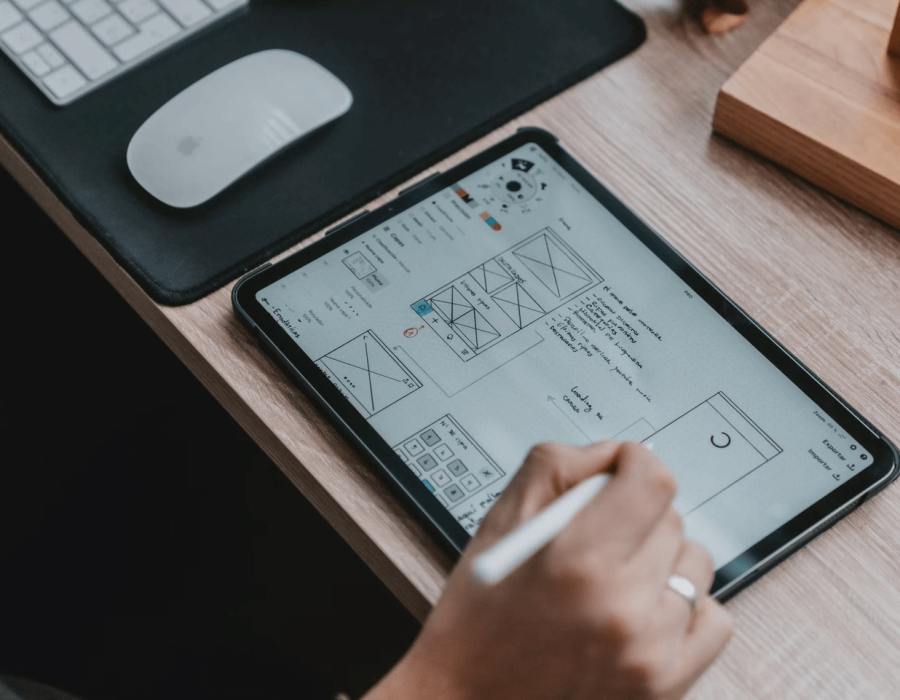Top UX Design Trends to Watch in 2025

UX in 2025: From “Nice-to-Have” to Non‑Negotiable
User experience (UX) is no longer a superficial add-on — in 2025, it’s the backbone of every successful digital product. Users expect smooth, intuitive, and intelligent interactions. The difference between a good and a great product often lies in how well UX anticipates and responds to needs.
Here’s a look at the top UX design trends you must watch — and adopt — to create intuitive, conversion-driven, and future-ready digital experiences.
1. Hyper‑Personalization Fueled by AI
Personalization isn’t optional anymore — it’s expected.
AI is making interfaces dynamic: they shift in response to user behavior, context, and history. Examples include:
Adapting layouts or components based on scroll/click patterns
Modifying content or visuals by location, time, or even weather
Recommending items or content based on prior preferences
Netflix’s changing thumbnails and Amazon’s adaptive product suggestions are early examples of this. Over time, personalization will expand deeper into navigation, interface layout, and content structure.
Tools & references: Adobe Sensei, Dynamic Yield
2. Voice UX & Conversational Interfaces
Voice is becoming a first-class interaction mode. With the rise of smart assistants and voice searches, UX will shift to accommodate natural language:
Voice search embedded in web/apps
Conversational navigation flows (chat‑style menus)
AI chat assistants providing context-aware support
Use cases are expanding: booking appointments via voice, exploring e-commerce catalogs by speaking, or using voice commands to navigate dashboards.
References: Google’s voice interaction guidance, tools like Voiceflow and Dialogflow
3. Micro‑Interactions & Delightful Animations
Small, meaningful motion delivers big impact. In 2025, animations will do more than decorate — they’ll guide, feedback, and delight:
Button hover and press effects
Swipe, pull-to-refresh, and gesture feedback
Real-time visual feedback (e.g. success confetti, bounce alerts)
When well-designed, these interactions help users feel the system is responsive and alive. Poor or excessive motion, however, can distract or slow down the experience.
Designer toolkits: LottieFiles, Framer Motion
4. Dark Mode (and Smart Theme Adaptation)
Dark mode isn’t just a novelty — it’s becoming a default expectation:
Auto-switching to dark mode based on device or user preference
High‑contrast dark + light themes for accessibility
This trend helps conserve battery, reduce eye strain, and offer aesthetic flexibility.
In 2025, expect interfaces to be designed to seamlessly adapt between light and dark modes, preserving usability and brand identity.
5. Inclusive Design & Accessibility at the Core
Accessibility is becoming baseline, not optional. As WCAG standards evolve (e.g. WCAG 2.2), more inclusive design becomes essential. Key features include:
Full screen reader & voice-over support
Keyboard-first and alternative navigation methods
High contrast modes, resizable text, adjustable spacing
UX teams will be more accountable for inclusive practices — especially when designing for diverse audiences in India, GCC, and beyond.
Tools to use: WAVE, axe DevTools, Google Lighthouse
6. Biometrics & Passwordless Experiences
Reducing friction in login and identity flows is vital. In 2025, authenticated experiences will increasingly shift toward:
Face ID, Touch ID, and biometric login
One-time passwords (OTPs), magic links
Seamless authentication built into device OS
These methods decrease drop-off at login stages and increase user confidence in security. According to research, complex login flows are a major cause of abandonment.
7. Zero UI — Interactions Without Screens
“Zero UI” refers to interfaces that rely less on buttons and screens — using voice, gestures, sensors, or ambient interfaces instead.
Examples:
Gesture-based controls in AR/VR
Eye-tracking in gaming or assistive apps
Ambient audio or haptic feedback in wearable devices
As devices proliferate (wearables, smart lenses, AR glasses), UX will expand beyond screens.
8. Ethical & Sustainable UX
Users increasingly expect brands to care about more than just usability — they care about ethics and sustainability. Key directions:
Low-impact design: minimal animations, optimized media, energy-aware interfaces
Transparent data practices and minimal tracking
UX that doesn’t exploit, but respects user attention and privacy
Designers will be judged not only by usability, but by responsibility.
9. Mobile-First → Mobile-Only Mindset
For many users, mobile is the only device. In 2025, desktop-first thinking is fading:
Thumb‑friendly navigation
Gesture-based UI over hamburger menus
Progressive web apps (PWAs) that behave like native apps
In markets like India and GCC, where mobile usage dominates, designing first for small screens is crucial.
10. UX Copywriting & Microcopy Optimization
Words matter. In UX, every phrase, instruction, or error message guides behavior. In 2025:
Friendly, clear error messages
CTAs that convey value ("Add to Cart", “Get Started”)
Helpful microcopy in empty states, onboarding prompts
Great UX writing reduces friction, sets expectations, and provides clarity when design alone falls short.
Tools & guides: UX Writing Hub, Hemingway Editor
FAQs (India & GCC Focus)
Q1: How do I test UX for a Chennai-based mobile app?
Use remote tools like Maze or Hotjar, and recruit testers from target regions. Conduct qualitative and quantitative feedback loops.
Q2: What’s the best design tool for UX teams in India?
Figma remains highly popular for collaboration. It integrates well with prototyping, testing, and developer handoff tools (e.g. Zeplin, FigJam).
Q3: Is UX critical for government or NGO sites in India / UAE?
Yes. They often serve diverse users across devices and can’t assume high bandwidth or tech literacy. Prioritizing accessibility, multilingual support, and low-performance design is key.
Source: https://www.blazedream.com/blog/top-ux-design-trends-2025
Conclusion
UX in 2025 is evolving to become more adaptive, emotionally intelligent, and ethically grounded. These trends push us toward experiences that feel seamless and respectful, not just functional.
By embracing hyper-personalization, voice interaction, inclusive design, low-friction authentication, and ethical practices, you’ll future-proof your products — and delight users along the way.
Original source: https://www.blazedream.com/blog/top-ux-design-tren
Recommended





Comments